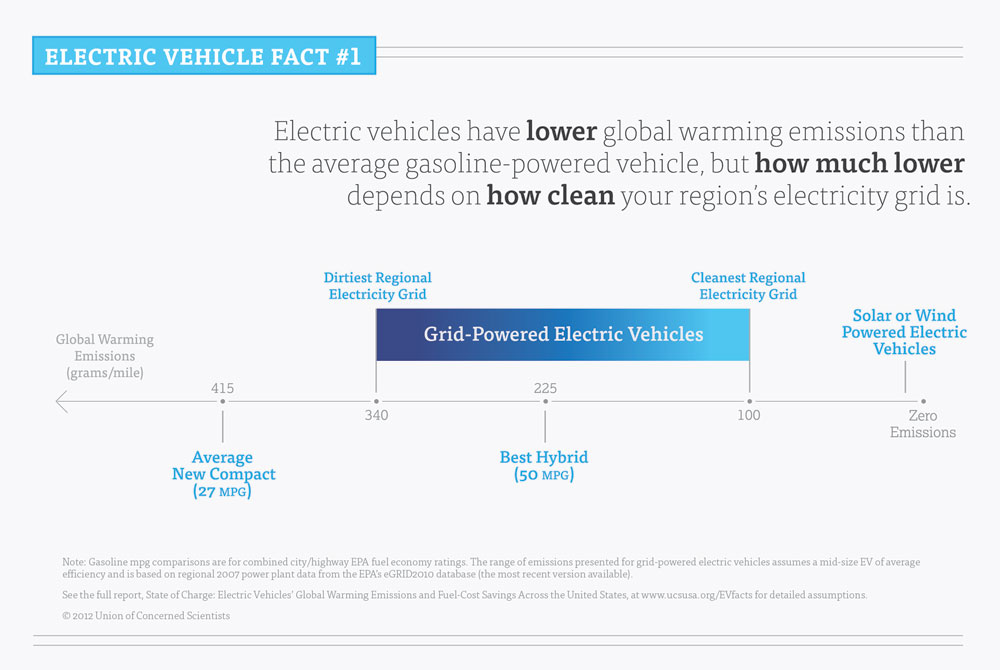The inherent gross inefficiency of the internal combustion engine surpasses even that of conventional thermal power plants. About 5% of the energy in the fuel actually moves a typical automobile. Battery electric vehicles, fuel-cell electrics, plug-in hybrids and others that eschew ICE technology get much more bang for the buck. California is proving this, as are many others.
It would follow, of course, that Lower Gasoline Consumption = Lower GHG Output. Moving to EVs, fuel-cell cars and these others will serve to radically reduce the amount of carbon dioxide coming from our vehicles. In the US, more than a third of our total greenhouse gas emissions come from the transportation sector. But, you will not be surprised to learn, the GHG-reduction benefits of a low or zero-emission vehicle depend on the source from which the electricity is derived. Solar or wind-powered electricity, for instance, is going to greatly boost the environmental benefits of our growing use of these clean technology vehicles.
The venerable Union of Concerned Scientists has just come out with a comprehensive report, State of Charge: Electric Vehicles’ Global Warming Emissions and Fuel-Cost Savings Across the United States, detailing to what extent this is true, including a regional breakdown in the US for what benefits accrue given the source of the power. Their conclusions include the facts that:
- Nationwide, EVs charged from the electricity grid produce lower global warming emissions than the average compact gasoline-powered vehicle (with a fuel economy of 27 miles per gallon)—even when the electricity is produced primarily from coal in regions with the “dirtiest” electricity grids.
- In regions with the “cleanest” electricity grids, EVs produce lower global warming emissions than even the most fuel-efficient hybrids.
- EVs charged entirely from renewable sources like wind and solar power produce virtually no global warming emissions.
The Christian Science Monitor reports that “Electric-drive vehicles (EVs) also compare well on fuel costs, saving their owners as much as $1,200 a year over the average new conventional internal combustion compact car that gets 27 miles per gallon (assuming the price of gasoline is $3.50 a gallon).”
The implications are pretty big. We not only can rid ourselves of the oil addiction but we can save ourselves, at the level of the individual consumer and at the macroeconomic level, a truckload of money, not to mention the blood, sweat, tears and toil that come with climate change, conventional air pollution, price volatility, the insecurity of our supplies, and a host of other ills associated with the fact that transportation in the US and in the world relies on oil for 95% of its primary fuel.
How, then, do we fully decarbonize our transportation systems – or at least get ourselves away from oil? The Rocky Mountain Institute has thought through this question rather at length. Their recent book, Reinventing Fire, has an extensive discussion of precisely how to do this. The section devoted to transportation lays it all out in detail: fit, electrified automobiles; using vehicles more productively; tripling heavy-truck efficiency; enhanced airplane efficiency; and fueling efficient vehicles with diverse options.
Here’s a video with their guiding genius, Amory Lovins, that highlights their approach on a key component – vehicle fitness:
